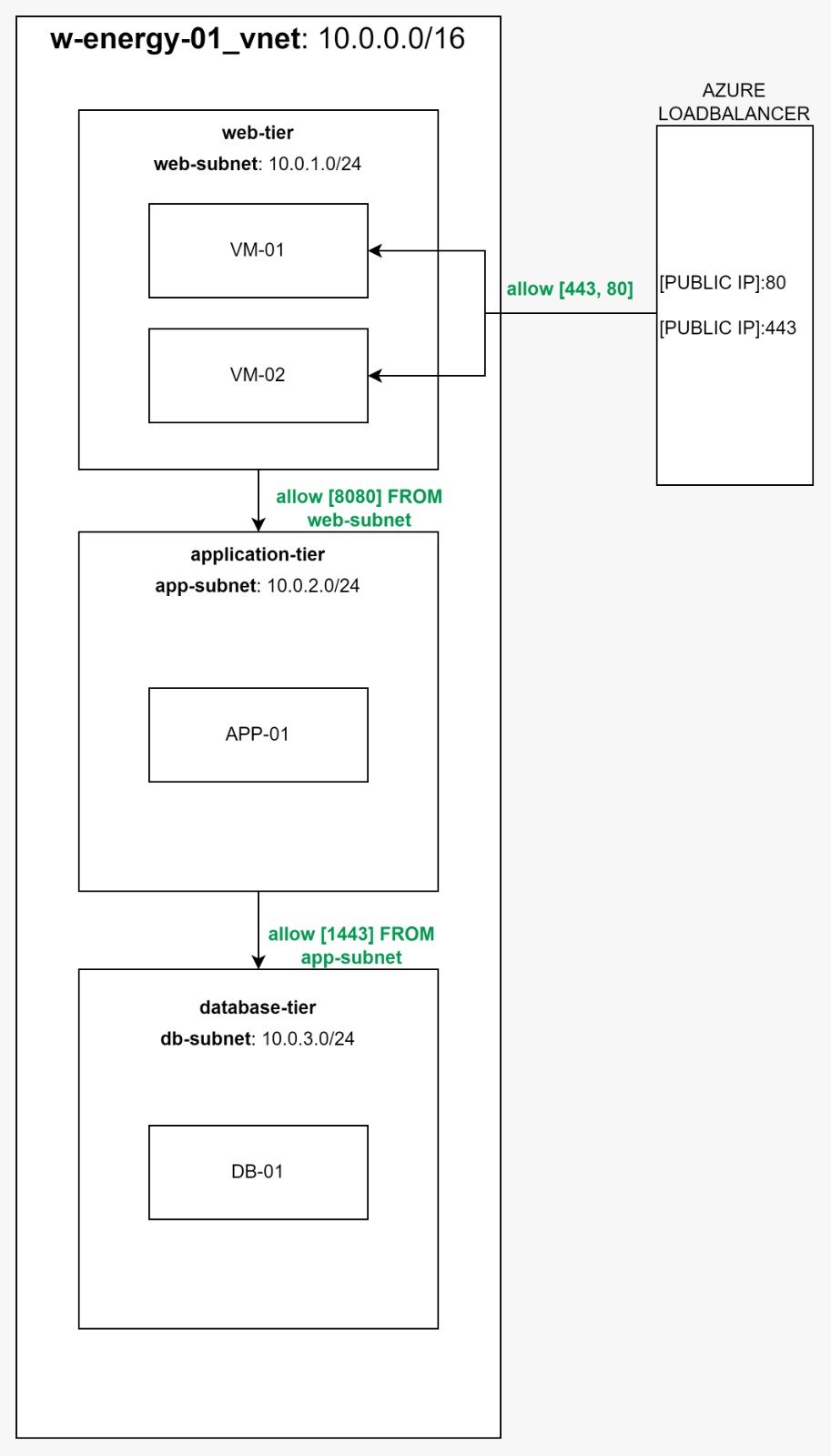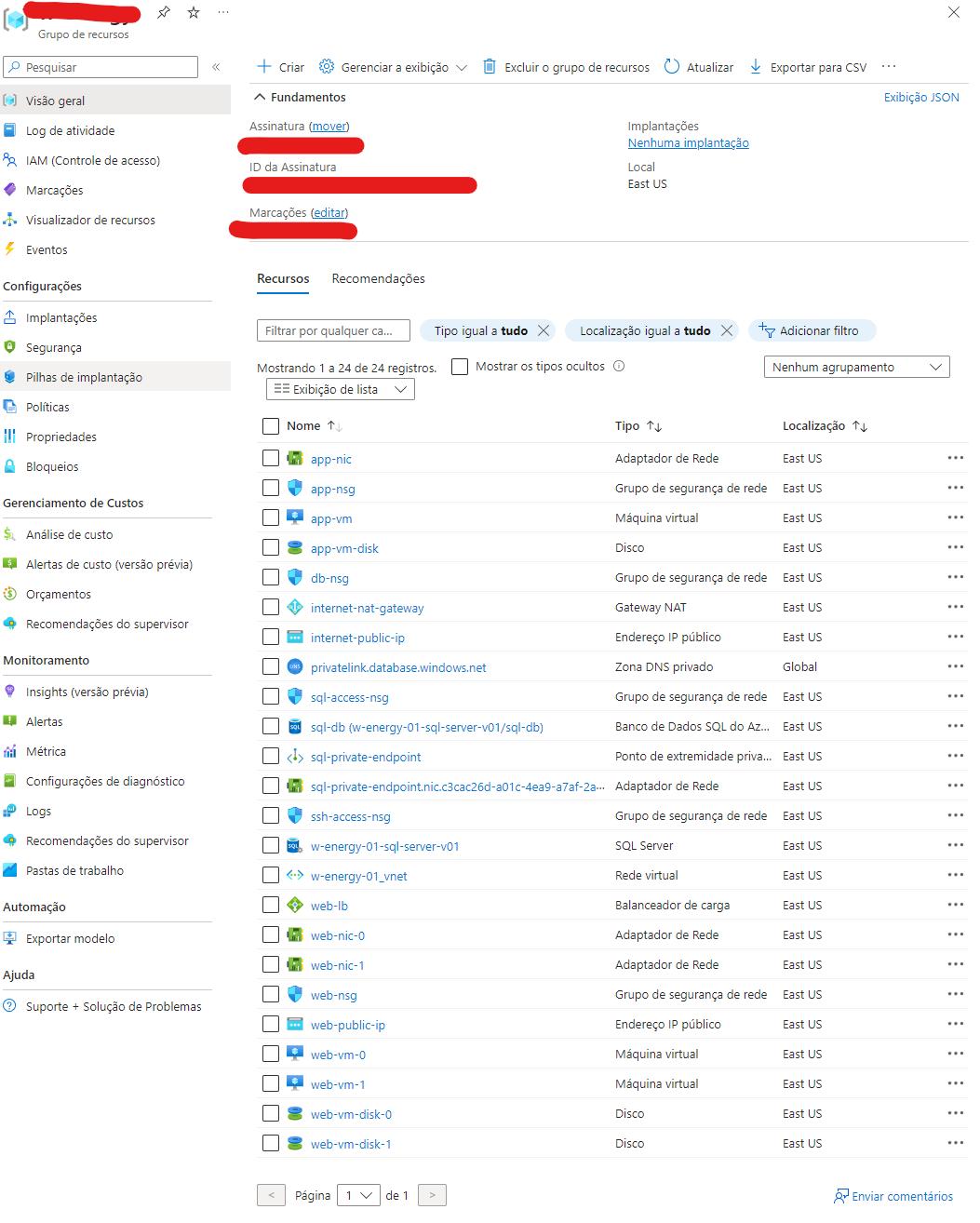Assignment description: Azure Infrastructure Automation with Terraform
Objective: Automate the deployment of a scalable web application in Azure using Terraform. Task:
-
Infrastructure Requirements:
- A Virtual Network (VNet) with subnets for web, application, and database tiers.
- Two Virtual Machines (VMs) in the web tier with a Load Balancer.
- A VM in the application tier.
- An Azure SQL Database in the database tier.
- A Network Security Group (NSG) with appropriate rules for each tier.
-
Automation:
- Write Terraform scripts to deploy the above infrastructure.
- Ensure the infrastructure is highly available and scalable.
-
Documentation:
- Provide a README file explaining the Terraform scripts.
- Include a cost estimate for the deployed infrastructure.
-
Deliverables:
- Terraform scripts
- README file with:
- setup instructions
- cost estimation.
- Screenshot of the deployed resources in the Azure portal.
- Azure account
- Terraform installed
- Azure CLI installed and authenticated
-
Clone the repository:
git clone https://github.com/maxwell-silva/w-energy-01.git cd infrastructure/azure -
Initialize Terraform:
terraform init
-
Set up variables: Create the
terraform.tfvarsfile with your Azure region, resource group name, admin username, and passwords. -
Test:
terraform plan
-
Deploy the infrastructure:
terraform apply
After you just need to wait and check you azure account after process end
IMPORTANT: DON`T FORGOT TO DESTROY AT END
- Terraform scripts
- 00-vnet - Vitual Network and subnets
- 01-nsg - Security rules between subnets
- 02-nat-gateway - Internet access
- 10-db-tier - DB Tier
- 10-app-tier - APP Tier
- 30-web-tier - WEB Tier
Recomended:
- Virtual Network: $4.00
- Virtual Machines:
- Standard_DS1_v2: ~$55/month per VM X 3
- Azure SQL Database:
- S1 tier: ~$30/month
- Load Balancer: ~$23.25/month
- Public IPs: ~$2.92/month per IP X 2
- Private Link: ~7.30/month
total: ~ 235/month
-
Add a New Subnet: Set up a new subnet to enable external access, enhancing the network’s organization and security.
-
Deploy a Management Virtual Machine: Introduce a virtual machine specifically for managing the environment. This will centralize control over administrative tasks, monitoring, and maintenance.
-
Set Up CI/CD Processes: Use the newly created management virtual machine to roll out continuous integration and continuous deployment processes. This step will help automate updates and maintenance, ensuring the environment remains up-to-date without constant manual oversight.
-
Implement Auto-scaling for App and Web Tiers: Configure auto-scaling for the app and web layers to efficiently manage resource use and maintain performance during varying load conditions.
-
Define Access Protocols for the Application Layer: Establish clear access protocols for the application layer if needed to secure and manage traffic flow, ensuring only authorized interactions are allowed.

